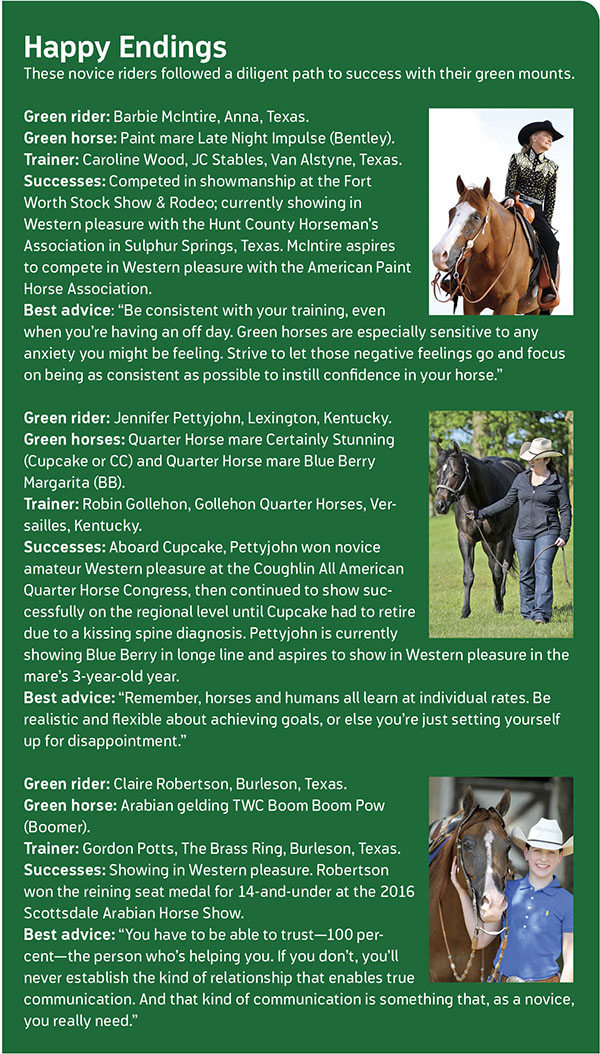You did that thing everyone says you’re not supposed to do. As a novice rider, you bought a green horse. Now you’re worried that you won’t be able to do justice to your inexperienced mount, with results that are less than ideal—and possibly unsafe.
[READ: 6 Tips for Beginner Riders]
While you’re right that virtually all professionals advise against this particular horse-and-rider combo, green-plus-green doesn’t have to equal black-and-blue. In fact, there are number of ways you can conquer the challenges of greenness and make your partnership a rewarding and enjoyable experience. Our experts and green-horse veterans will provide you with six key strategies. Follow them and work hard, and you’ll give yourself and your horse the best chance for success, no matter your riding goals.
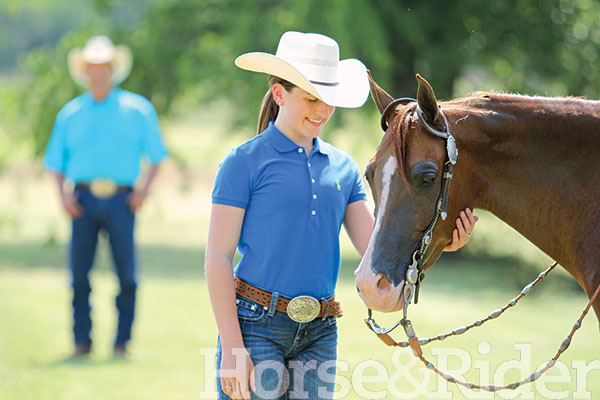
A Resistol RideSafe is one way to keep your green rider safe in the saddle. (As an Amazon Associate, we earn from qualifying purchases made through affiliate links.)
1. Commit the time.
To make your partnership a success, you’ll need to carve out the time necessary. Training a green horse is a time-consuming endeavor, even for professionals. And it’s going to be an even longer process for you because, as a novice, you’ll be constantly learning and absorbing a lot of new information. If your job or family obligations enable you to get to the barn only once or twice a week, you’re going to have a difficult time making any substantial progress. The ideal is working with your green horse five or six days a week.
“Consistency is essential for all young, inexperienced horses,” says pro Robin Gollehon, who owns and operates Gollehon Quarter Horses with her husband, Roger, in Versailles, Kentucky. “And being consistent requires patience, dedication, perseverance, and time. Throughout the learning process, green horses inherently change as they adjust and adapt to new experiences, and you’ve got to be prepared to ride and work with different ‘versions’ of your horse from week to week. This can be challenging for inexperienced riders, because they constantly find themselves trying to catch up to what their horses know—or vice versa. And this tends to make the learning process a bit slower.”
[MORE: Novice-Friendly Gear]
5 Star 7/8-inch Thick Western Contoured Natural Pad
Cactus Saddlery Relentless Floral Tooled Slip-Ear Headstall
NRS 1/4 Breed Basket Stamped Heavy Oil Ranch Cutter
Bob Avila Collection O-Ring Signature Snaffle
As a novice rider, you’ll likely need to commit additional time and money to taking lessons on more seasoned horses.
“It’s important that you learn and practice your riding skills on finished horses to hone your aids, achieve balance in the saddle, and build up your muscle strength and endurance,” Gollehon adds. “This way, you’ll be more physically prepared and confident when you ride your green horse.”
While the experience of learning new skills side-by-side with your green horse can be rewarding, be prepared for hard work and a fair amount of frustration along the way. As a novice, expect the additional time commitment of studying (and even doing homework) on what you learn each day; repeating training lessons; plus a lot of practice, sweat—and even some tears.
[READ: 14 Essential Safety Tips]
2. Seek help from a pro.
By far your best chance for success is to get expert help in one form or another. “When the horse doesn’t know what to do and the rider doesn’t know what to do, you have to seek assistance,” says pro Gordon Potts, who owns and operates his training facility, The Brass Ring, in Burleson, Texas. “Otherwise, it can be a disaster.” If financially feasible, put your horse in full-time training with a reputable professional, or at least have a trainer with you when you’re working with your horse—preferably one who has experience working with novice riders on equally inexperienced horses.
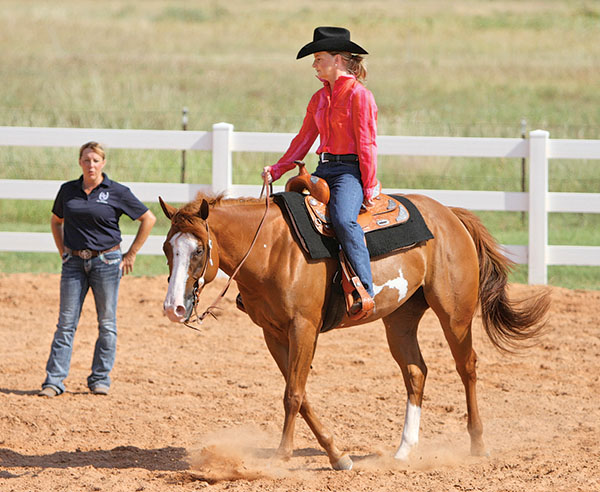
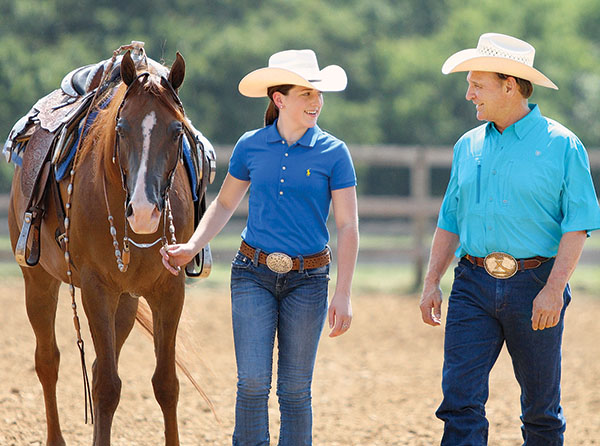
One of the most essential skills in training horses, Potts explains, is having “feel”—a keenly developed intuition for how a horse responds to varying degrees of stimuli. “Great horseman Bob Avila put it best when he said, ‘Feel isn’t something you’re born with. It’s something you acquire.’ And, as a novice rider, you absolutely need help from someone who has this skill,” Potts says. “You have to teach young, inexperienced horses in a way they can understand—and that’s where a professional can help you.”
At only 13, Claire Robertson has been riding for a little more than a year and now has her green horse in training with Potts. She says that even though she still has a lot to learn, having the guidance and leadership of a knowledgeable trainer put her on track for success from the beginning.
“It’s important to find a trainer whose teaching style works for you,” Robertson advises. “If your personality doesn’t mesh well with your trainer’s, communicating is always going to be a challenge—and that can be hard, especially when you’re young. I know I have a lot more to learn, but I appreciate that Gordon understands my passion and wants to help me achieve my goals.”
Jennifer Pettyjohn, who’s been working with Robin Gollehon for more than three years, is now training her second green horse as a novice rider. She stresses the importance of establishing an open, honest relationship with your trainer from the get-go.
“Maintaining a dialogue and establishing trust with the Gollehons right from the start really helped me through this endeavor,” Pettyjohn says. “Robin enabled me to observe the whole process with both my green mares—from the first groundwork to longe line to under saddle—and having this foundation was crucial to my success. At every step, Robin taught me why she uses the techniques she does, which provided me with more confidence in handling training situations on my own.”
[READ: Attend a Clinic]
3. Set realistic goals.
Just as you would for a child, exercise patience and flexibility in setting achievement objectives for your green horse. “Keep an open mind for both your and your horse’s sake,” Pettyjohn stresses. “While it’s helpful to have goals in place, don’t set a rigid timeline for progress. We all learn and progress on an individual basis, so you’ve absolutely got to be flexible.”
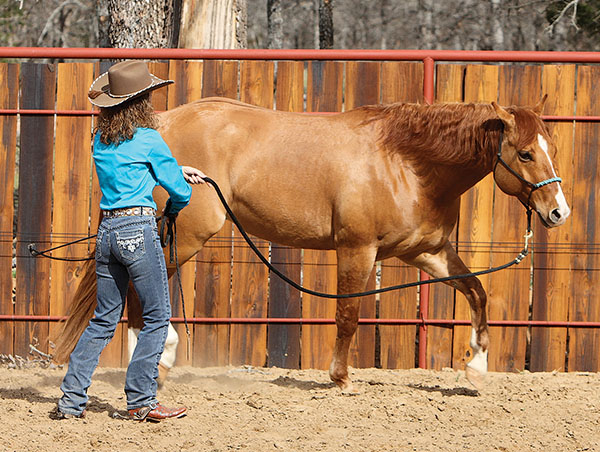
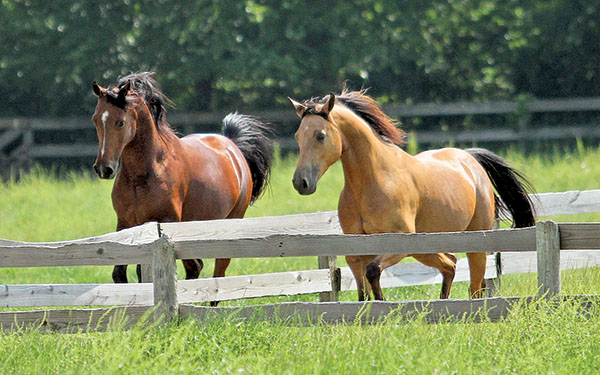
As a novice rider, Barbie McIntire purchased a green, 4-year-old Paint mare a little over a year ago and admits she was nervous about starting her riding career with a greenie.
“I learned really fast that if I’m having a bad day, my mare can immediately sense my anxiety,” she says. “On those days, I’ve learned to adjust my expectations to focus on accomplishing just one small goal, so we can always end in a good place for the day. While my trainer, Caroline Wood, has taught me the importance of conveying a strong leadership role toward my mare, she also taught me the benefits of keeping our experiences on a positive track. I have a healthy acceptance that I’m in this for the long haul, and perfection isn’t going to happen overnight.”
4. Make the most of groundwork.
“Fall in love with groundwork,” advises clinician, trainer, and colt-starting champion Stacy Westfall. “I don’t mean just endlessly longeing your horse in circles, but using fundamental groundwork to gain a greater understanding of your horse’s temperament.”
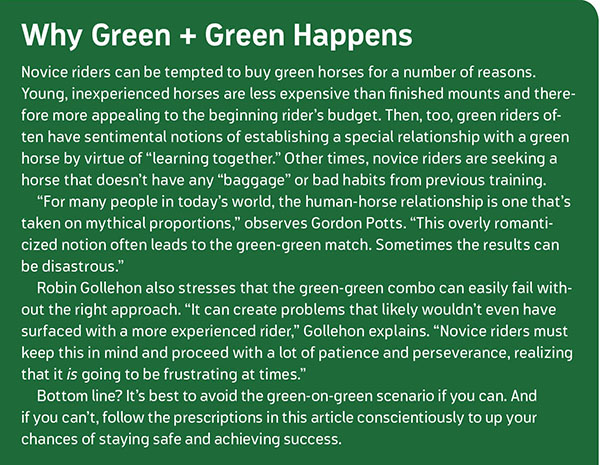
Westfall explains that from the ground, you can better observe how your horse responds to new situations.
“Is he curious? Fearful? Or does he have a ‘whatever’ attitude? You’ll also be able to assess whether he’s a little on the lazy side, or appears to have endless energy. The more you learn about your horse’s view of the world from the ground, the safer and more effective you’ll be in the saddle,” she adds.
Pettyjohn and McIntire agree that consistent groundwork has been key to their success. Pettyjohn has successfully shown her second green horse in longe line classes, while McIntire competed with her young mare in showmanship.
“At my first show, I wasn’t comfortable competing in the saddle yet, so we did showmanship,” says McIntire. “I was able to make an amazing connection with my mare through the groundwork experience. It really boosted my confidence and helped me get through some problems in the saddle down the road.”
[READ: Goal Setting Tips for Riders]
5. Become an avid learner.
Soak up as much information as you can from instructional books, magazines, DVDs, and credible Web sites. Or, if it’s in your budget, Gollehon suggests auditing a clinic or two with a reputable trainer or clinician and taking careful notes, so you can apply the information you learn at home.
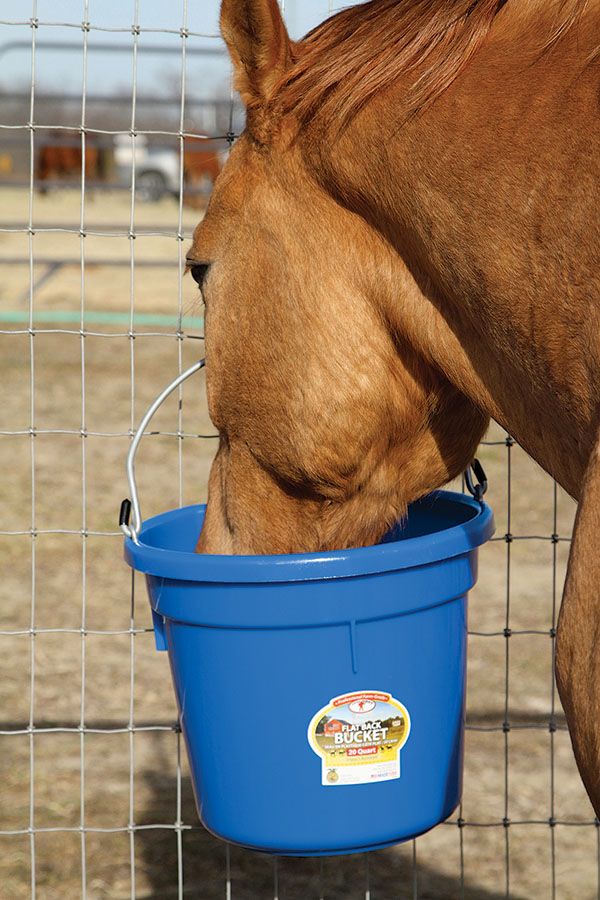

Westfall advises novice riders to watch their trainers teaching other clients and their horses. “Observing others can really teach you which training techniques work and which don’t,” she says. “And often just watching will provide you with insight about how a green horse thinks and responds to things.”
As you progress with your own horse, whether you’re working with him on the ground or in the saddle, Westfall also advises that you have your trainer or a friend make a video of you in action. “Being able to watch yourself on the screen really helps you assess what you’re doing well and where you need more work,” she says. “Save these videos and re-watch them periodically to analyze how your skills and your horse progress over time.”
6. Provide proper care for a greenie.
Green horses are typically young, and naturally they have a lot of energy. If possible, provide your horse with plenty of turnout time. This is especially true if he has the kind of spunk that could sabotage your training sessions or otherwise keep him from focusing on you. Longeing or round-penning him before you ride also helps to get the “fresh” out.
Be mindful what you feed him, as well, to avoid amping him up on excess carbohydrates. Get advice from your vet or an equine nutritionist to figure out the feeding regimen that provides adequate nutrients and energy for the amount of work he’s doing. Keep him in good flesh but not fat. Overfeeding him with grain or other rich feeds is a surefire way to make your training more challenging.
